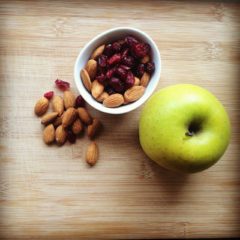January 2016
How to Create Headlines That Compel a Positive Response to Your Dental Marketing Content
How important are headlines? Before I reveal how to create them, understand that your dental promotions, dental web page copy, and even your dental blog posts can succeed or fail based on the headline.
Advertising and copywriting legend, John Caples, once said they are the most important part of your advertisement. He proved his point by committing four of his 18 chapters to them in his book, Tested Advertising Methods.
Your headline copy can make or break your dental marketing. This is why they’re so difficult and occasionally time-consuming to write.
Professionally speaking, I invest the first phase of writing to the headline. You should expect to do the same if…you want to compel your reader to engage with your content.
Your headline has ONE job
Your headline MUST grab your reader’s attention.
John Caples adds this jolting perspective – “If the headline is poor, the copy will not be read. And copy that is not read does not sell goods.”
You could say, “I”m a dental provider, I don’t ‘sell’.” I encourage you to not get caught up in the semantics of what is or is not “sales.”
Bottom line, your headline compels or it doesn’t. The middle ground is littered with well intentioned, creative, salesy hype, or lame attempts at trying to be cute.
How to Create Headlines that Compel Your Readers to Keep Reading to the Point of Doing What You’re Asking Them to Do
(By the way, there are two bonus insights in that sub-heading.)
1-Promise something.
Too many promotions are vague. Vagueness should not be confused with compliance with dental industry marketing standards.
There’s a difference in making unsubstantiated claims about a treatment or service and being vague about the benefit they can potentially deliver.
Make a promise that introduces a benefit.
“Who else wants whiter teeth – in less time?”
(Promise: whiter teeth, less time)
“Great new discovery controls bad breath – makes your teeth healthier too.”
(Promise: fresher breath, healthier teeth)
Those promises include practical benefits. The stated benefits compel your reader to read deeper into your promotion to discover more.
Promised results or benefits compel your reader to stay in the conversation with you via your promotion.
- List at least 5 benefits of the service you’re promoting.
- Use specific, direct wording that establishes your service as THE solution (promised result) for taking action.
2-Embed an image in your reader’s mind.
What your reader can see themselves using, doing, etc will compel them to take action. Avoid language that’s overused, technical, industry-oriented, insider-based, etc.
You “know, like, and trust” your industry, right? This makes it natural for you to feel as though everyone else (including your patients/clients) do also.
This is where “How To…” headlines work well.
“How to [COMMON TASK] That [REWARDING BENEFIT].”
The “common task” creates an image of an action, activity, priority, etc. And again, you compel with a “rewarding benefit” – in this instance, something the reader can “see” themselves enjoying, etc.
3-”State a fact.”
Facts establish credibility. When you can highlight a fact in your content headline – do it!
Your reader will be drawn deeper in to your content. And they will begin to trust you as a credible source of information.
Select portions of your positive reviews or testimonials. Remember: You can protect the identity of your source by using their first name initial or their full name initials (e.g. “E” “ES,” etc.) for attribution.
Here’s an example:
“…I went to my high school reunion and the compliments made me feel like I’d been crowned homecoming queen!” – JS. Want the Same Results?
Research data sources of your product or service. Share benefit oriented statistics in you headline.
92% of Our Dental Patients Said This One Thing Eliminated Their [PROBLEM]
If You Do This Two Times Per Year You Could Reduce Your Dental Treatment Costs by [X]%
Facts help compel a response.
4-”Ask a question.”
Questions create curiosity. They also produce engagement with your solution or answer.
In the previous headline example using the quotation (“I went to my high school reunion and the compliments made me feel like I’d been crowned homecoming queen!” – JS Want the Same Results?) the question creates curiosity on two levels.
1) Tell me more about the “results” and 2) Give me more information about what she did to achieve them.
Questions also give your reader a way to process their assumptions. Your question-oriented headline can create a “Hmmm, I haven’t thought about that before…” response.
Your reader will begin to engage with your content by answering the question you posed. It’s important that your question headline prompts curiosity.
A question headline works for a simple reason. It creates a compelling reason to stay with your content and eventually take action as result.
There is more to a promotional headline than creativity or cuteness. Lead with benefits and you’ll win more often.



